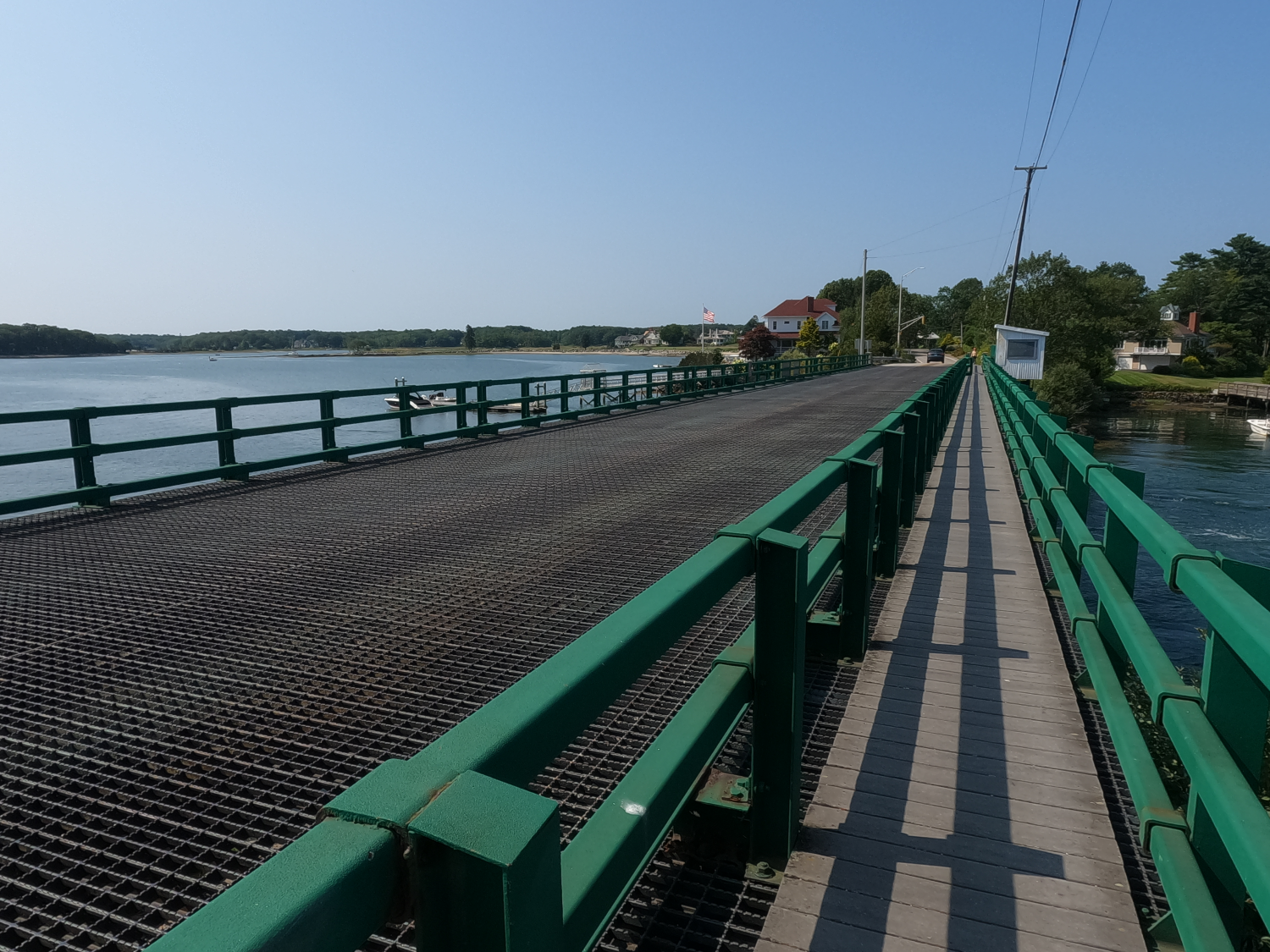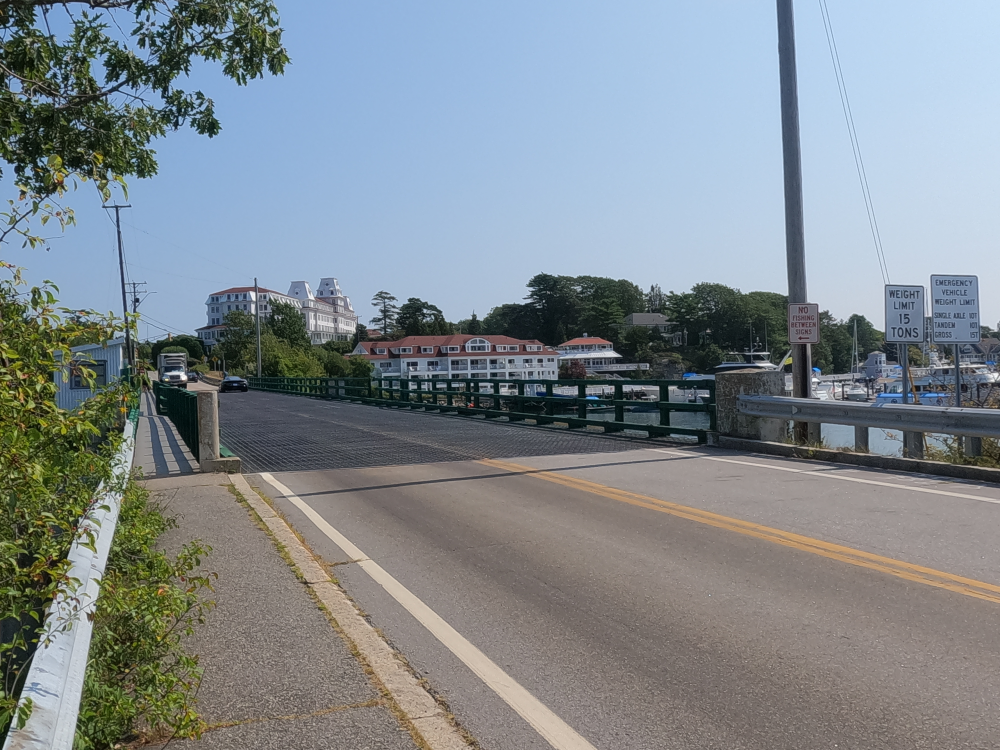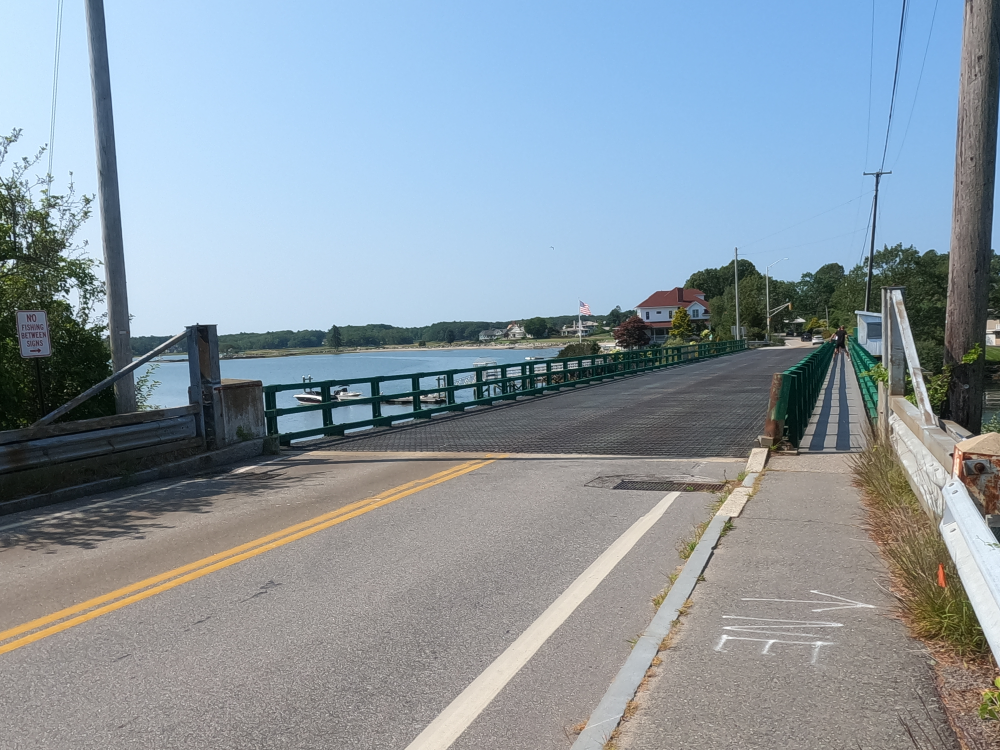
New Castle-Rye Bridge
(Blunts Island Bridge)
NBI Information
Location
State: New Hampshire
County: Rockingham County
Feature Carried: NH-1B
Feature Crossed: Little Harbor
Latitude, Longitude: 43.0585,-70.7291
Toll: On free road
Maintenance Responsibility: State Highway Agency
Structure Open, Posted, or Closed to Traffic: Posted for load (may include other restrictions such as temporary bridges which are load posted)
History
Year Built: 1942
Historical Significance: Bridge is eligible for the National Register of Historic Places.
Year Reconstructed: 1975
Picture Date: August 9, 2025
Geometry
Lanes on Structure: 2
Lanes under Structure: 0
Skew: 0 degrees
Number of Main Spans: 1
Main Structure Type: Movable - Bascule
Main Structure Material: Steel
Number of Approach Spans: 5
Approach Structure Type: Stringer/Multi-beam or Girder
Approach Structure Material: Steel continuous
Condition
Inspection Date: November 2023
Deck Condition: Satisfactory
Superstructure Condition: Serious
Substructure Condition: Poor
Channel Condition: Good
Culvert: Not Applicable
NBI Year: 2024
Bridge Information
The New Castle-Rye Bridge is a single leaf Trunnion bascule bridge which connects New Castle Island to the Mainland in New Hampshire. It was built in 1942 and is located in a tidal area where water elevation can change up to nine feet between high and low tide.
This location originally had a ferry that was operating by 1643. It was replaced with a toll bridge in 1759, which failed on June 14, 1800. The bridge was replaced with another toll bridge. However, the tolls were not sufficient to maintain the bridge, and it eventually fell into decay and was removed. The New Castle Bridge was built in 1821, which connected the north end on New Castle Island to the mainland and made a bridge on the south end redundant. It wasn’t until 1872 that plans began to construct a new bridge at this site. The construction on numerous seaside homes and resort hotels began in the 1870’s, which required improvements to the roads. In fact, the Hotel Wentworth (built in 1874) was claimed to be the largest wooden structure on the New Hampshire coast. The new bridge was named the Wentworth House Bridge after the famous Wentworth family and their mansion across Little Harbor in Portsmouth. This bridge was a wood pile trestle bridge with a double leaf bascule bridge and was the first movable bridge at this location. However, the bridge was rarely opened. In fact, when the bridge opened in 1940, it was reported that this was the first time the bridge opened in 25 years. The bridge was taken over by the state in 1925.
The new bridge was constructed in 1942, along with the New Castle Bridge, as part of a defense effort during World War II. The previous wooden trestle was replaced with a steel bridge, which allowed the bridge to carry heavy trucks to support the military operations on the island at Fort Stark, Fort Constitution and Camp Langdon. Due to financial constraints during the war, the bascule span did not originally include the operating machinery or the operator’s house. Only the trunnion, bearings and counterweight were initially installed. The electronically operated gears and lift machinery was installed in 1962.
In 1957 it was discovered that many of the steel piles had significantly deteriorated at the mudline. The piles were encased with concrete filled steel jackets. The bridge was rehabilitated in 1975, and additional repairs were made in 1978, 2010 and 2011. New Hampshire DOT evaluated the replacement and rehabilitation options in 2013. It was concluded that rehabilitation was not feasible due to the bridge's deteriorated condition, and that a full replacement would be necessary. However, members of the public raised concerns in 2014 about replacing the bridge with another movable bascule bridge. The current bridge opens infrequently (averaging 2.4 openings per year over the last 5 years), so a fixed bridge was suggested. This prompted NHDOT to conduct a benefit-cost analysis between a new bascule bridge and a fixed bridge. It was concluded that the life cycle costs for the fixed bridge was much cheaper (about $10 million), so a fixed span alternative was submitted to the U.S. Coast Guard in 2015. This alternative was approved in 2016, with the requirement that the new bridge provide a vertical clearance of at least 16.52 feet to meet the required navigation requirements. Based on this, NHDOT selected a two-span fixed bridge alternative, and design is currently in progress.
References






